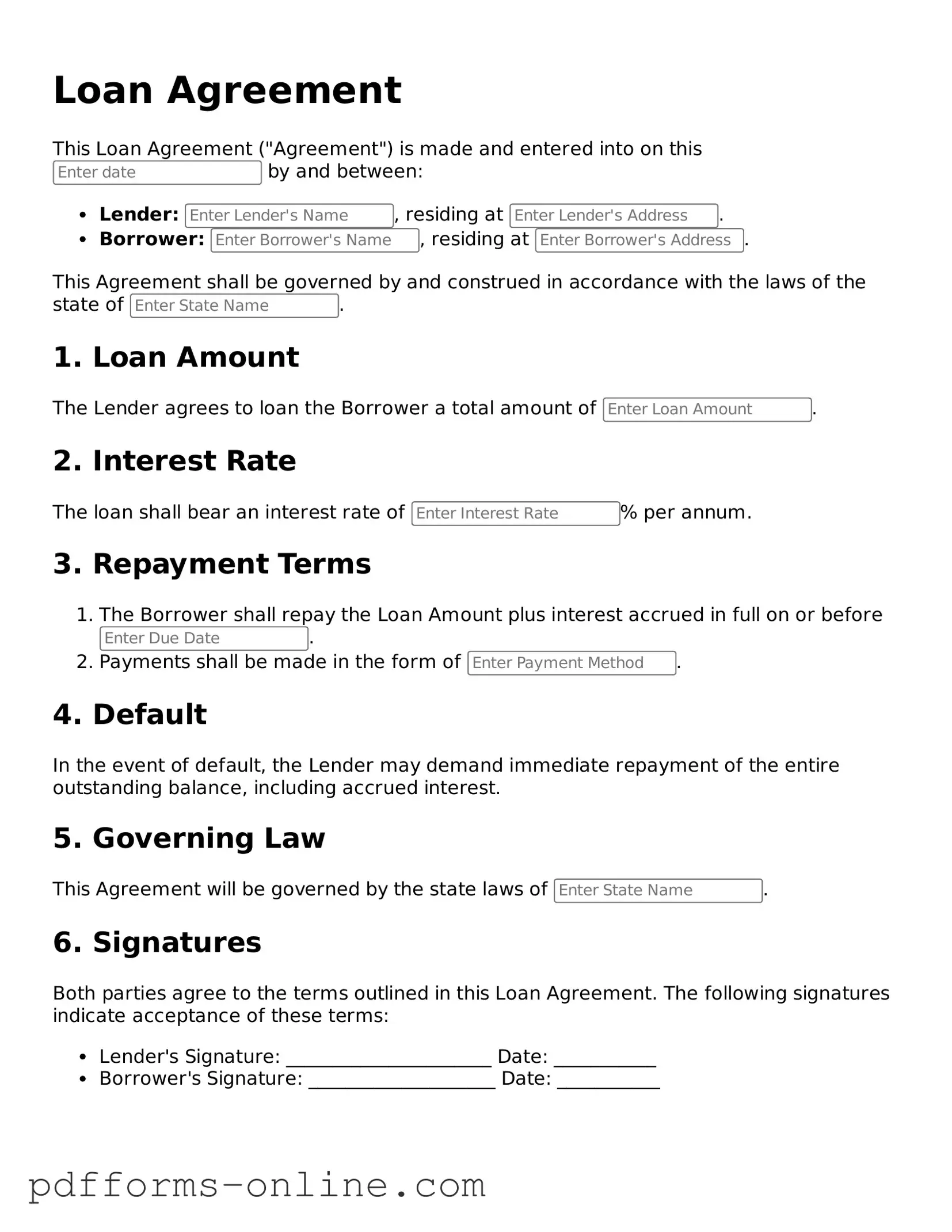A promissory note is a document that outlines a borrower's promise to repay a loan under specified terms. Like a Loan Agreement, it details the amount borrowed, the interest rate, and the repayment schedule. However, a promissory note is typically simpler and focuses primarily on the borrower's commitment to repay the debt, rather than the comprehensive terms and conditions found in a Loan Agreement. This document serves as a straightforward acknowledgment of the debt and can be used in various lending situations.
A mortgage agreement is another document similar to a Loan Agreement, particularly in real estate transactions. It secures a loan by using the property as collateral. Both documents outline the loan amount, interest rates, and repayment terms. However, a mortgage agreement specifically includes details about the property being financed and the rights of the lender to take possession if the borrower defaults. This added layer of security for the lender makes it distinct from a standard Loan Agreement.
A lease agreement shares similarities with a Loan Agreement in that it establishes terms for the use of property in exchange for payment. Both documents specify payment amounts and schedules. However, a lease agreement focuses on the rental of property rather than a loan for purchasing. It typically includes terms regarding the duration of the lease, maintenance responsibilities, and conditions for termination. This makes it more about the use of property rather than the borrowing of funds.
An installment agreement is comparable to a Loan Agreement in that it outlines a structured payment plan for repaying a debt. Both documents detail the total amount owed, payment frequency, and interest rates. However, installment agreements are often used in situations where a borrower is repaying a tax debt or other obligations over time. This type of agreement may include specific provisions for penalties or late fees, which can differ from the terms in a typical Loan Agreement.
A credit agreement is another document that resembles a Loan Agreement, particularly in its function of detailing the terms of borrowing. Both documents specify the amount of credit extended, interest rates, and repayment terms. However, a credit agreement often applies to revolving credit accounts, such as credit cards or lines of credit, where the borrower can draw on the funds as needed. This flexibility in borrowing distinguishes it from the more fixed structure of a traditional Loan Agreement.
